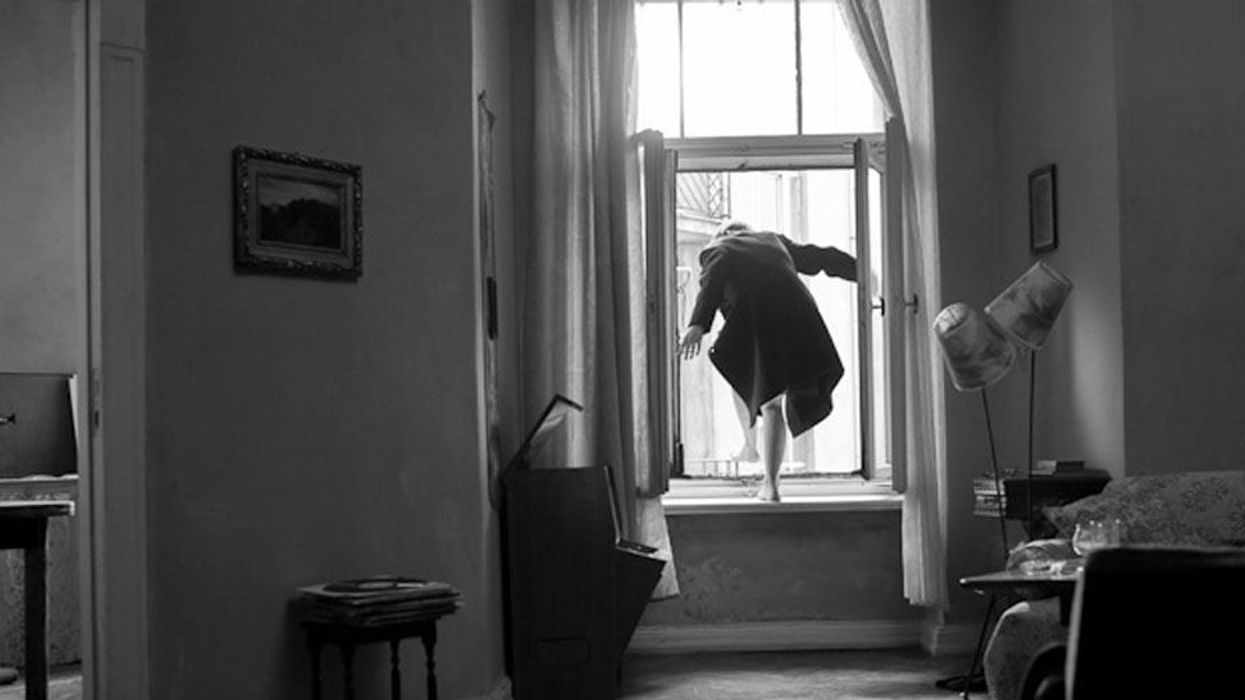Watch: How the Length of a Cut Can Change the Meaning of a Scene
Whether it lingers or ends abruptly, the length of a shot communicates something very unique to your viewer.

One of the most important things we've learned from great Soviet filmmakers like Kuleshov, Pudovkin, and Eisenstein is that editing has its own language. The montage theory states that a shot communicates to the audience with its rhythmic and intellectual characteristics, as well as with its relationship with other shots next to it on the timeline (aka juxtaposition). But what about shot duration? Can the length of a shot change the way a scene is understood by an audience? CineFix tries to answer this question in the following video by comparing the editing in scenes from Ida and No Country for Old Men.
"Holding Long"
The long take in Ida is a perfect example of how these shots can be used as a storytelling device. It demonstrates how a lingering shot can be effective on not only an emotional level, but on a spatial level as well.
On an emotional level, the subject in Ida has made up her mind that she's going to end her life, and the shot length reflects both this decision and her emotional state in several ways. First, think of the montage as a mind—the slow pacing of the three cuts from this scene (the wide shot in the bathroom, the close-up in the tub, and the wide shot in the living room) resemble the slow pacing of the thoughts of someone who has made a decision. There isn't a flurry of thoughts or ideas; the mind isn't working hard to come to a conclusion, because one has already been made. Emotionally, this kind of lingering shot is interesting because: 1) the slow pacing also resembles the despondency of someone who has come to such a decision, and 2) the slow cutting mimics the slow blinking of that same despondency. (You've heard of the correlation between the "cut" and the human blink, right?)

The long take works on a spatial level, too. Since the important action is going to take place in the window where the camera is pointing, there is no reason to move it. Further, the fact that it remains static builds anticipation every time the subject leaves the frame, namely because we've been trained as viewers (as the video mentions) that whatever the camera points at is something important. In Ida, the camera points at the window and we see the subject moving in and out of the frame. What does that tell us? Well, it tells us that the only constant in the frame is the window, and therefore it, rather than the subject, should be our point of focus.
"Cutting Short"
The opposite editing technique was used in No Country for Old Men. Rather than staying on a shot to build tension and anticipation, we're abruptly taken from one seemingly unnecessary shot to the next, resulting in a strange feeling of dissatisfaction with the overall scene. We're removed from what feels like the middle of a shot and placed in the next one without any closure or explanation, something the directors did on purpose in order to reflect the dissatisfaction Anton felt after Carla Jean refused to "call it," or to choose a side of the coin and ultimately seal her fate.
This method essentially plays with the rules of editing we've learned as viewers: that films, scenes, and individual shots have beginnings, middles, and ends. In other words, there needs to be a rhyme and reason, a cause and effect to what we're watching, and the Coens don't give us that. Instead, they give us a series of shots that at first appear to lead to the justified demise of a villain, but instead is just a drawn-out, nonsensical ride-off-into-the-sunset. The bad guy gets away with his crimes—and we are there to watch as he slowly and absurdly disappears into the horizon.
There are many different editing techniques when it comes to shot length, each with their own effect on the audience. (In fact, many long takes you see in movies are there to communicate primarily with cinematography rather than with editing.) However, one basic tenet of editing is to cut economically, to leave out anything unnecessary. It's up to you to figure out what should be left in and what should be left out, but keep in mind one lesson that the video teaches: it's not just about the narrative, the story you're telling, it's also about the narration, the way in which you tell it.
Source: CineFix













![Ethos, Pathos, Logos: 20 Effective Ways to Advertise [Infographic]](https://nofilmschool.com/media-library/ethos-pathos-logos-20-effective-ways-to-advertise-infographic.jpg?id=34064614&width=600&height=600&quality=90&coordinates=560%2C0%2C0%2C0)

